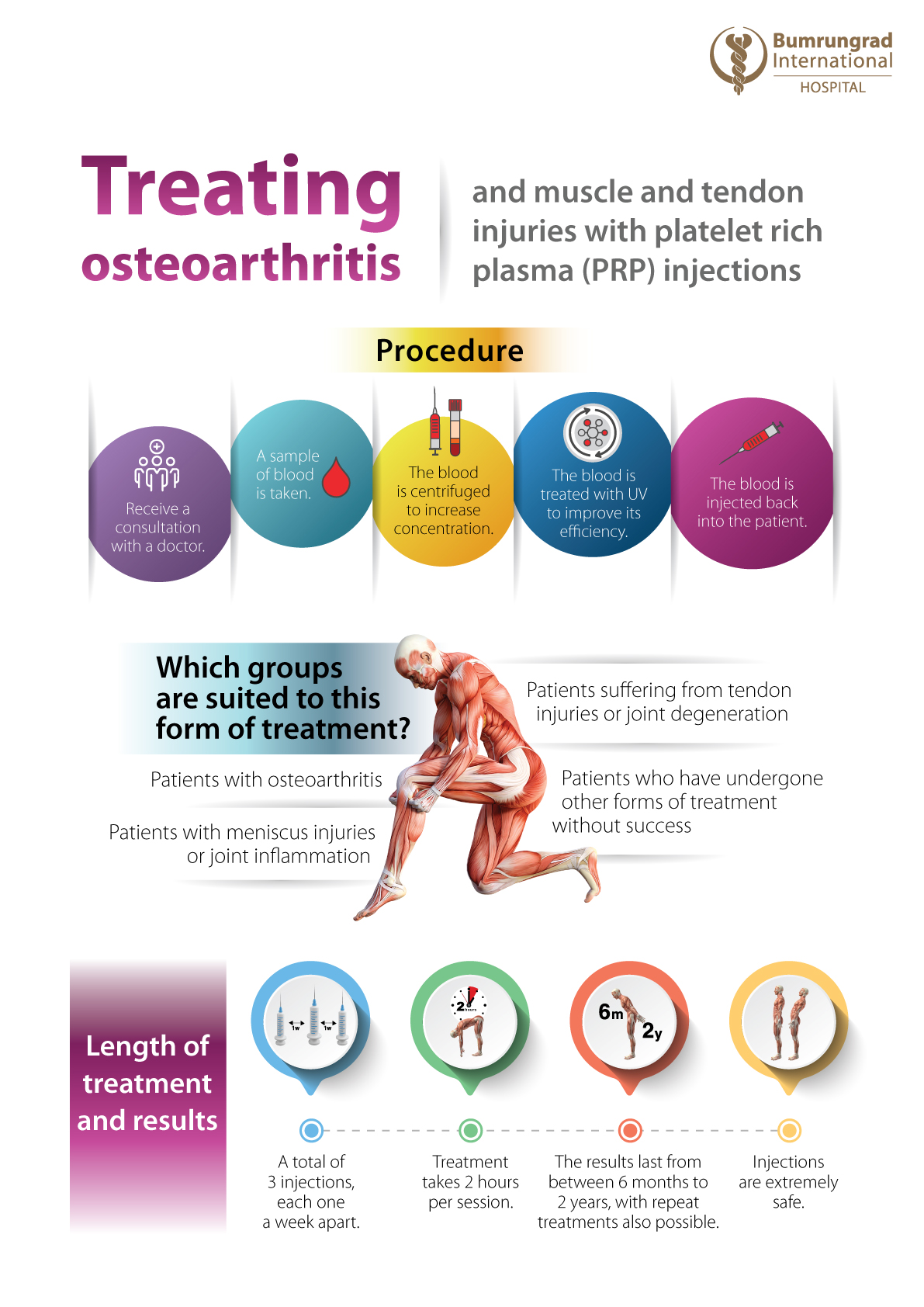.jpg)
Platelet-rich plasma (PRP) injections can be used to treat a whole host of joint disorders
Platelet-rich plasma injections, also known as
PRP treatment, utilize the patient’s own blood and are an effective, non-surgical form of treatment used to alleviate symptoms for a range of joint conditions and injuries, such as knee osteoporosis, tendon injuries, ligament injuries, and soft muscle tissue damage. The treatment is extremely safe and repeatable where necessary.
What is PRP?
PRP (platelet-rich plasma) treatment is a form of treatment that uses a small sample of the patient’s own blood, from which the platelets and plasma are separated from red blood cells in a centrifuge. The resulting liquid then undergoes further concentration using a centrifuge and photoactivation process before it is administered into the injured area of the joint
bone or soft muscle tissue to reduce pain and accelerate recovery.
What are the benefits to PRP treatment?
Separating the platelets and plasma from the red blood cells using a centrifuge increases the concentration of the former substances, which are then administered back into the joint in order to repair damaged cells and reduce any pain felt by the patient.
Which groups are suited to PRP treatment?
-
Patients suffering with osteoporosis
-
Patients with meniscus injuries or knee joint inflammation
-
Patients suffering with tendon injuries, such as tennis elbow and golfer’s elbow
-
Patients for whom physical therapy, medication, or steroid injections have been unsuccessful
How long does a course of PRP treatment last?
Generally, doctors will administer a total of 3 PRP injections, at one week intervals, and with each session lasting approximately 2 hours. The results of this treatment can last anywhere between 6 months to 2 years, while it is also possible for patients to undergo repeated PRP treatment.
PRP treatment is extremely safe because it relies on the patient’s own blood to alleviate their injury and accelerate recovery. However, PRP treatment must be conducted by highly experienced specialists in order to achieve the best results.
The Sports Medicine and Joint Center at Bumrungrad International Hospital has a team of highly skilled specialists who have undergone specific training in how to administer PRP injections. As such, our patients can feel confident in the care they are receiving, especially with regard to complex cases or hard-to-reach injury locations.
Find out more information at the Sports Medicine and Joint Center at Bumrungrad International Hospital. Telephone: 1378.
For more information, please contact the Sports Medicine and Joint Center at Bumrungrad International Hospital. Telephone:
02-066-8888 or 1378
For more information please contact:
Last modify: May 07, 2025